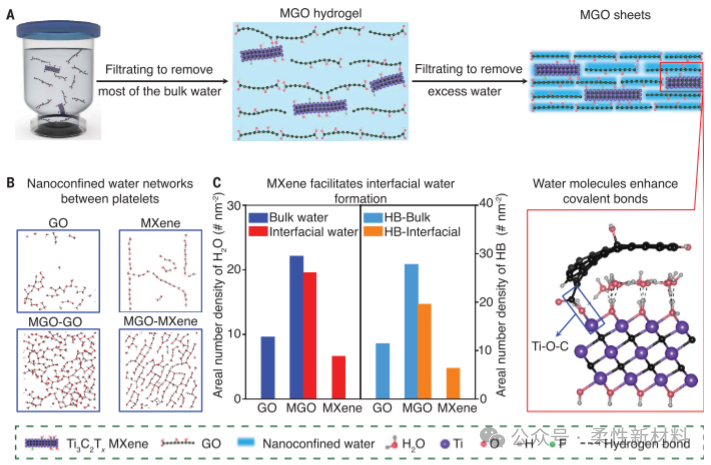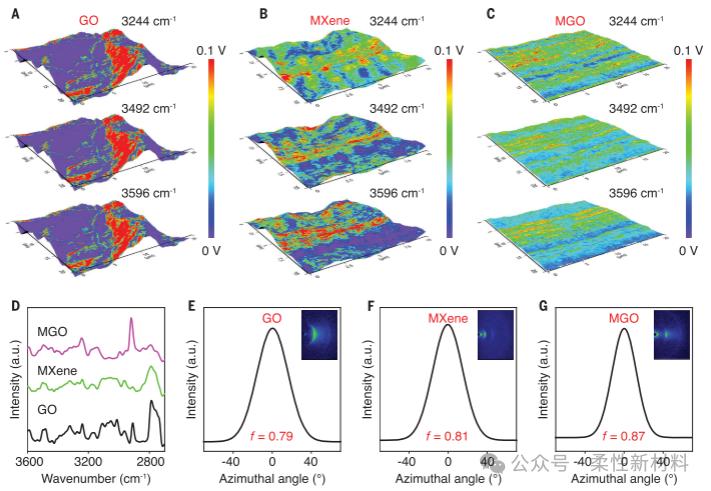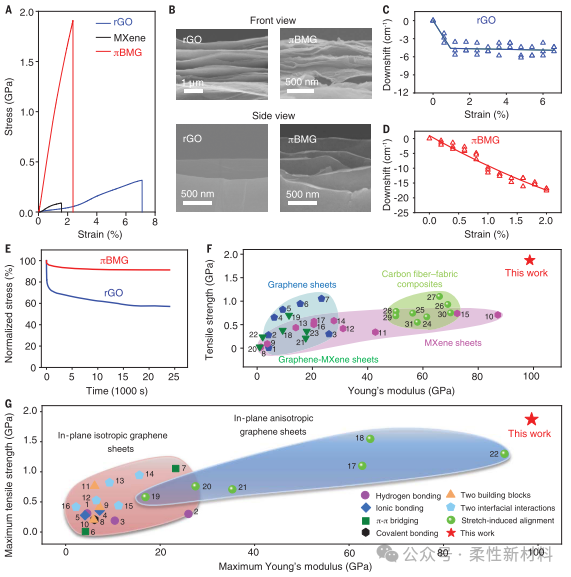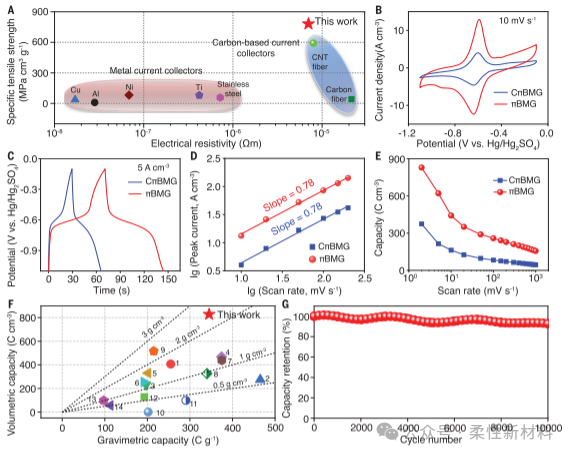Water-Induced Strong Isotropic MXene-Graphene Sheets for Electrochemical Energy Storage” Makes Science Cover
Flexible New Material Innovation
A team from Beihang University and the Institute of Physics and Chemistry at the Chinese Academy of Sciences recently published a groundbreaking study in Science, titled “Water-Induced Strong Isotropic MXene-Graphene Sheets for Electrochemical Energy Storage.” The study introduces a method that utilizes nano-confined water to arrange basal planes and π-π covalent bridging, creating Ti₃C₂Tₓ-MXene-bridged graphene sheets at room temperature. These isotropic sheets feature an impressive in-plane tensile strength of 1.87 GPa, a modulus of 98.7 GPa, and in-plane conductivity reaching 1423 S/cm. With a volumetric capacitance of 828 C/cm³, this water-induced arrangement offers a promising approach for 2D nanosheet alignment in various macroscopic assemblies. Original Paper DOI: 10.1126/science.adj3549.

Electrochemical Energy Storage (EES) Materials
Electrochemical energy storage materials can store and release energy during chemical reactions, an area gaining traction due to the energy crisis. The development of high-performance EES materials is crucial for transitioning to clean energy. Common EES materials include metal oxides, polymers, and carbon-based materials, each with specific advantages. Metal oxides provide high surface area and electrochemical activity but lower energy density, while carbon-based materials offer superior conductivity and stability. Two-dimensional nanomaterials like MXenes and graphene have now entered the spotlight due to their exceptional stability and overall performance.
Research Highlights
Using similarly sized graphene oxide and Ti₃C₂Tₓ-MXene nanosheets, the team created highly aligned, isotropic MXene-bridged graphene (πBMG) sheets. Through vacuum filtration, water molecules were confined between the MXene and graphene oxide nanosheets, forming an orderly plane of hydrogen bonds. This nano-confined water helps stabilize the structure during processing. After reduction with HI and π-π bridging, the πBMG sheets achieved excellent in-plane isotropy.

Mechanical and Electrical Properties
The πBMG sheets exhibit superior tensile strength (1.87 GPa) compared to graphene oxide sheets (0.31 GPa) and show a low porosity (3.87%). The dense nanosheet stacking ensures efficient stress transfer and high mechanical performance. Additionally, πBMG sheets reach conductivity levels of 1423.0 ± 0.5 S cm⁻¹, which is 1.6 times greater than the highest rGO sheet conductivity (898.2 ± 0.8 S cm⁻¹). These qualities make them suitable for applications demanding high mechanical and electrical performance.



Electrochemical Performance
The πBMG sheets achieve an impressive volumetric capacity of 828 C/cm³ at a scan rate of 2 mV/s, surpassing previously reported graphene-based storage electrodes. Additionally, with a weight capacity of 345 C/g, they outperform most graphene-based electrodes in energy storage. After 10,000 cycles at 200 mV/s, the capacity retention remains at 93%, showcasing the material’s durability.

This research advances high-performance energy storage with nano-confined water to arrange nanosheets in a structured, isotropic assembly, potentially transforming 2D nanomaterial applications.

